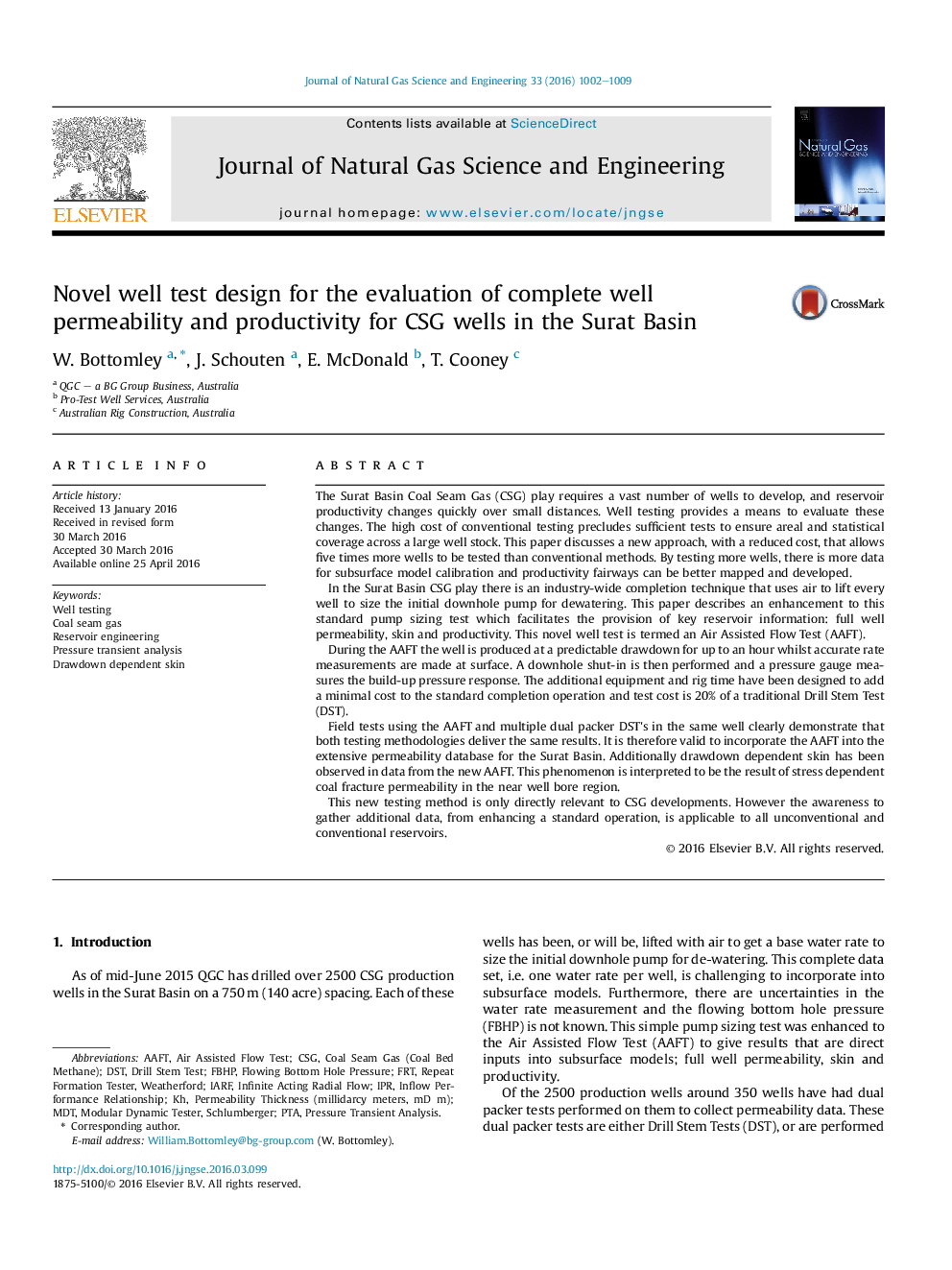| Article ID | Journal | Published Year | Pages | File Type |
|---|---|---|---|---|
| 1757131 | Journal of Natural Gas Science and Engineering | 2016 | 8 Pages |
•Description of a novel new well test for understanding subsurface variation in permeability in coal seam gas wells.•Results from this new test are compared to old dual packer tests and are shown to agree.•Additional results are presented that show well skin is dependent on drawdown (for coal seam gas wells).
The Surat Basin Coal Seam Gas (CSG) play requires a vast number of wells to develop, and reservoir productivity changes quickly over small distances. Well testing provides a means to evaluate these changes. The high cost of conventional testing precludes sufficient tests to ensure areal and statistical coverage across a large well stock. This paper discusses a new approach, with a reduced cost, that allows five times more wells to be tested than conventional methods. By testing more wells, there is more data for subsurface model calibration and productivity fairways can be better mapped and developed.In the Surat Basin CSG play there is an industry-wide completion technique that uses air to lift every well to size the initial downhole pump for dewatering. This paper describes an enhancement to this standard pump sizing test which facilitates the provision of key reservoir information: full well permeability, skin and productivity. This novel well test is termed an Air Assisted Flow Test (AAFT).During the AAFT the well is produced at a predictable drawdown for up to an hour whilst accurate rate measurements are made at surface. A downhole shut-in is then performed and a pressure gauge measures the build-up pressure response. The additional equipment and rig time have been designed to add a minimal cost to the standard completion operation and test cost is 20% of a traditional Drill Stem Test (DST).Field tests using the AAFT and multiple dual packer DST's in the same well clearly demonstrate that both testing methodologies deliver the same results. It is therefore valid to incorporate the AAFT into the extensive permeability database for the Surat Basin. Additionally drawdown dependent skin has been observed in data from the new AAFT. This phenomenon is interpreted to be the result of stress dependent coal fracture permeability in the near well bore region.This new testing method is only directly relevant to CSG developments. However the awareness to gather additional data, from enhancing a standard operation, is applicable to all unconventional and conventional reservoirs.
